How autonomy in the workplace builds trust, accountability, and innovation in 2026

Remember those childhood video games where someone older would always grab the controller to “help” you beat the tough level? You’d finish it faster, but you’d also skip the thrill of figuring it out yourself. The real satisfaction came when you learned the moves, failed a few times, and finally cleared it solo.
That’s the power of autonomy. As leaders, we can guide every move and guarantee quick wins or we can step back, offer complete autonomy, and trust people with the controls to build confidence and capability. That’s how task autonomy, staff autonomy, and autonomy in management come together to shape an autonomous working environment.
It might take longer, but it’s how autonomy and accountability grow, and how autonomy in business turns from theory into impact. Stick around to see how that plays out in practice.
TL;DR
What is autonomy in the workplace?

TL;DR
Autonomy in the workplace is employees’ freedom and responsibility to manage tasks, make decisions, and organize processes without constant oversight, aligned to organizational goals. It thrives on trust, communication, and expectations, boosting engagement, innovation, satisfaction, and retention when effectively supported.
Autonomy in the workplace means giving employees the freedom and responsibility to manage their own tasks, make decisions, and organize their work processes without constant oversight. This approach empowers individuals to leverage their strengths, use their judgment, and develop creative solutions.
Autonomy doesn’t mean working in isolation or disregarding company goals; rather, it involves aligning personal tasks with organizational objectives while trusting employees to determine how they accomplish these goals.
Workplace autonomy often leads to to higher job satisfaction, as it provides a sense of ownership and encourages personal growth. It also fosters innovation, as employees feel more encouraged to experiment and explore new ideas.
For autonomy to be effective, it requires a foundation of trust, clear communication, and well-defined expectations. Organizations that support autonomy typically benefit from increased employee engagement, productivity, and retention, as individuals feel more valued and motivated to contribute meaningfully to their work.
But before we dive deeper into strategies, it’s worth clearing up a common confusion of what autonomy really means and what it doesn’t.
Workplace autonomy: What it is and isn’t
Workplace autonomy is a cornerstone of modern organizational success, empowering employees with decision-making capabilities while maintaining alignment with company goals. However, misconceptions about its scope often lead to misapplication. Understanding what workplace autonomy is — and isn’t — helps foster an autonomous environment.
What workplace autonomy is:
- Aligned independence: Employees have the freedom to decide how they execute tasks and make their own decision while adhering to organizational priorities. This ensures creativity without deviating from company objectives.
- Skill-based decision-making: Employees leverage their expertise, boosting job performance and motivation. Granting autonomy this way also promotes skill development across the organization.
- Collaborative flexibility: Autonomy thrives on mutual trust and open communication, encouraging collaboration while respecting unique approaches to work.
- A driver of accountability: By giving employees greater control, workplace autonomy increases responsibility, creating a high-performance culture.
Human beings have an innate inner drive to be autonomous, self-determined, and connected to one another. And when that drive is liberated, people achieve more and live richer lives.
What workplace autonomy isn’t:
- Complete independence: Employee autonomy doesn’t mean disregarding team goals or company guidelines. Instead, it allows employees to take ownership of their processes within set boundaries.
- Absence of oversight: Managers still provide guidance, mentorship, and the right tools to ensure employee engagement aligns with business objectives.
- One-size-fits-all: Autonomy is flexible, varying across roles and capabilities, ensuring employees feel supported while taking on more responsibility.
With the foundations clear, it’s time to zoom out and understand how workplace autonomy differs from personal autonomy and why that difference matters.
How is workplace autonomy different from personal autonomy?
Imagine autonomy as a steering wheel. In life you turn it wherever you choose, but at work the road has lanes and signs. If you only remember one thing about this, make it this: workplace autonomy balances freedom with shared goals, while personal autonomy is all about individual direction.
| Aspect | Workplace autonomy | Personal autonomy |
|---|---|---|
| Definition | Employee autonomy within company goals and structures. | Individual freedom and self-direction in daily life. |
| Decision-making | Task autonomy and role autonomy shaped by team priorities. | Choices driven by personal values and preferences. |
| Boundaries | Exists within policies, collaboration, and accountability. | Unrestricted by external rules or shared objectives. |
| Focus | Autonomy to make decisions that impact organizational success. | Decisions focused on personal growth and satisfaction. |
| Environment | Part of an autonomous workplace and shared outcomes. | Independent of business context and collaboration. |
Job autonomy lives within boundaries. It’s freedom with a purpose, unlike personal autonomy, which is often limitless and self-directed.
Why is autonomy in the workplace important?

Autonomy in the workplace empowers employees to make decisions, fueling motivation and innovation. Here’s how it transforms both individual and organizational success.
TL;DR
Autonomy in the workplace is important because it builds trust, accountability, and engagement. It empowers employees to make decisions, boosts creativity, reduces burnout, improves retention, and fosters innovation, creating a culture where individuals feel valued, motivated, and aligned with organizational goals.
- Boosts motivation and engagement: Autonomy gives employees the freedom to make decisions and take ownership of their work, enhancing their sense of purpose. They’re not just clocking hours—they’re actively contributing to meaningful goals, which drives them to strive for excellence and take pride in their achievements.
- Encourages creativity and innovation: When employees have room to explore and experiment, they’re more likely to think outside the box. This freedom to innovate leads to new ideas, breakthroughs, and an environment where every employee's unique perspectives contribute to growth.
- Builds trust and collaboration: In an autonomous culture, employees are trusted to make decisions and manage responsibilities. This trust fosters mutual respect, transforming managers into mentors who guide rather than micromanage, which strengthens team collaboration.
- Enhances skill development: Autonomy allows individuals to tackle new challenges, broadening their skill sets. This freedom to grow supports continuous learning and empowers employees to shape their own career paths.
- Promotes personal and professional fulfillment: By enabling growth and learning, autonomy serves as a catalyst for both personal satisfaction and career advancement, giving employees a sense of fulfillment in their roles.
Still, autonomy isn’t a one-size-fits-all concept. It shows up in different forms and degrees across roles, teams, and functions.
What are the different types of autonomy in the workplace?
Autonomy in the workplace can take on different forms, each tailored to support various work styles and environments. By recognizing and implementing these types, companies can empower employees to work in ways that best suit their strengths and responsibilities.
- Task autonomy: Employees have control over how they complete assigned tasks, selecting their methods and approaches independently. This freedom fosters creativity and encourages employees to find innovative solutions.
- Time autonomy: Employees can decide when they work, allowing them to align their hours with personal productivity peaks. This flexibility can reduce burnout and improve focus, especially valuable in remote or flexible work settings.
- Role autonomy: Team members have input in shaping their roles, selecting projects or areas that align with their skills and interests. Role autonomy enhances motivation, as employees are more engaged when they work on tasks that resonate with their strengths.
- Goal autonomy: Employees are involved in setting goals and priorities, giving them a stake in the outcomes. This sense of ownership boosts accountability, driving individuals to meet objectives with greater commitment.
Think of autonomy as jet fuel. When teams have control over how they work, job performance, creativity, and ownership take off fast.
What are the benefits of autonomy in the workplace?

Think of autonomy in the workplace like switching from a GPS route to free-drive mode where direction stays, but employees choose the path. Here’s the short version before we dive deeper: workplace autonomy drives motivation, creativity, and growth, helping build an autonomous work culture where people truly thrive.
- Boosted motivation: Employee autonomy gives people ownership of outcomes, sparking purpose-driven performance and sustained energy.
- Creativity unlocked: Freedom at work lets employees experiment and solve problems their own way, serving as an example for autonomy to innovative ideas that push the business forward.
- Trust and empowerment: Role autonomy builds stronger manager-employee relationships by shifting leadership from oversight to mentorship and guidance.
- Collaboration that clicks: When teams operate with workplace autonomy, they bring diverse perspectives and ideas to the table, creating synergy and better solutions.
- Higher job satisfaction: Control over tasks, priorities, and methods turns everyday work into something meaningful, boosting happiness and engagement.
- Faster growth: Autonomy in a job encourages people to take on new challenges, develop skills, and shape their own career paths.
- Agility and adaptability: Autonomous work environments allow teams to react quickly to change and make on-the-spot decisions without constant approvals.
- Less burnout: With task autonomy and the power to set boundaries, employees balance workloads and maintain healthier energy levels.
- Talent magnetism: A culture that prioritizes autonomy and accountability attracts high-performing talent and improves retention in competitive markets.
Now that we’ve seen how a workplace and its autonomy meaning boosts performance, let’s explore the other side of the risks leaders must manage when granting that freedom.
What are the disadvantages of autonomy in the workplace?
While autonomy can bring numerous benefits, there are potential disadvantages when it’s not managed effectively:
- Inconsistent results: With high levels of autonomy, employees may adopt differing methods, leading to inconsistent outcomes that impact quality and brand reputation.
- Difficulty in coordination: When individuals or teams operate independently, it can create silos, making it challenging to align on goals and coordinate efforts, especially on cross-functional projects.
- Decision-making overload: Too much autonomy can overwhelm employees who may not feel equipped to make constant decisions, potentially leading to stress or decision fatigue.
- Risk of reduced accountability: In highly autonomous environments, the line between individual and team accountability can blur, making it harder to identify and address performance issues.
- Potential for inefficiency: Without structured oversight, autonomous employees may invest time in tasks that don’t align with company priorities, potentially reducing overall efficiency.
That’s where a deeper trio — empowerment, autonomy, and authority — come into play.
How are empowerment, autonomy, and authority connected at work?
Empowerment, autonomy, and authority each play distinct roles in workplace dynamics:
| Aspect | Empowerment | Autonomy | Authority |
|---|---|---|---|
| Definition | Providing employees with resources and support to achieve their potential | Granting freedom to make choices in how tasks are executed | Enabling individuals to make decisions that impact the organization |
| Scope | Focuses on skill development and growth opportunities | Emphasizes task ownership and flexibility | Encompasses setting objectives and enforcing policies |
| Impact | Builds confidence and fosters a proactive mindset | Encourages creativity and innovation | Ensures accountability and alignment with strategic goals |
| Employee role | Actively engage in learning and skill-building | Choose methods and schedules to achieve tasks effectively | Make critical decisions that guide team or project outcomes |
| Manager’s role | Support through mentorship and development resources | Trust employees to manage their own processes | Oversee and guide alignment with broader organizational strategy |
Next, let’s break down the different levels of autonomy and how they shape accountability, trust, and performance across roles.
What are the different levels of autonomy at work?
Autonomy at work exists on a spectrum, with different levels to suit varying roles and team needs:
- Basic autonomy: Employees complete tasks independently but follow defined processes under close supervision. This level is ideal for new hires or roles requiring structured workflows.
- Moderate autonomy: Workers have flexibility in how they approach tasks within set guidelines, allowing some room for creativity and adaptation. This level helps build confidence in decision-making while still providing a safety net.
- High autonomy: Employees set their priorities, manage projects, and make key decisions that align with team goals, with minimal oversight. This level fosters accountability and innovation, particularly in experienced teams.
- Complete autonomy: Team members control the project’s direction, decisions, and resources, holding full accountability for outcomes. Complete autonomy suits highly skilled teams working in complex or creative environments.
- Strategic autonomy: Employees have the freedom to propose new projects and long-term goals, contributing to the company’s vision and strategy. This top-tier level empowers trusted employees to lead growth and innovation initiatives, shaping the organization’s future.
Still, autonomy often gets confused with other freedoms, especially flexibility and remote work.
The key element of engagement is trust; building trust requires companies to provide workers with as much autonomy and flexibility as possible.
How autonomy differs from flexibility and remote working?
Autonomy, flexibility, and remote working are often used interchangeably, but each serves a unique purpose in the workplace:
| Aspect | Autonomy | Flexibility | Remote working |
|---|---|---|---|
| Definition | Grants employees control over how they complete their tasks, with decision-making power in their roles | Allows employees to adjust their schedules or work hours, offering freedom within structured guidelines | Enables employees to work outside the traditional office setting, often from home or other locations |
| Scope | Focused on task management, decision-making, and ownership of outcomes | Centered on adaptable working hours or custom schedules | Primarily concerns the location of work rather than how tasks are done |
| Impact on work style | Encourages innovation and independence, as employees are trusted to determine their methods and approaches | Supports work-life balance by letting employees manage personal and professional commitments | Enhances convenience and reduces commuting, potentially increasing productivity in suitable roles |
| Manager's role | Provide guidance but allow employees freedom in their approaches to work | Set boundaries and expectations while allowing flexible hours | Establish clear communication channels and expectations for remote team members |
| Examples | Task-based project ownership, self-directed goal setting | Choosing start/end times, compressed work weeks | Working from home, coworking spaces, or on a hybrid basis |
Let’s look at what a lack of autonomy does to engagement, motivation, and trust, and why it’s often the silent culture killer.
What causes lack of autonomy in the workplace?
A lack of autonomy in the workplace can result in a restrictive, disengaged environment. Here are some key issues that arise:
- Micromanagement: Excessive oversight stifles creativity and discourages independent problem-solving, leading to frustration and diminished morale.
- Limited flexibility: Rigid schedules and strict processes hinder employees from adapting work methods, impacting productivity and satisfaction.
- Low accountability: When decision-making is centralized, employees feel disconnected from outcomes, reducing motivation.
- High turnover: An inflexible work culture often leads to increased employee turnover as workers seek environments with greater freedom and trust.
- Reduced innovation: Without the freedom to explore new ideas or take initiative, employees are less likely to contribute innovative solutions, which can hinder the organization's growth and adaptability in a competitive market.
- Stress and burnout: Constant oversight and lack of control over work processes can increase stress, as employees may feel pressured to meet unrealistic expectations or work within limiting frameworks, leading to burnout over time.
- Decreased skill development: When tasks and methods are rigidly defined, employees have fewer opportunities to expand their skills, try new approaches, or build confidence in decision-making, limiting their professional growth and career satisfaction.
A workplace without autonomy is like a team running with weights on where progress slows, creativity shrinks, and morale takes a hit.
How to implement autonomy in the workplace?

Implementing autonomy in the workplace empowers employees and drives meaningful engagement. Here are key steps to fostering a culture of autonomy in your organization:
TL;DR
Implement autonomy in the workplace by setting clear goals, communicating expectations, and providing support. Empower employees to make decisions, offer feedback, and build trust. Balance freedom with accountability to enhance engagement, innovation, and productivity while aligning individual contributions with organizational success.
- Set clear expectations: Begin by defining goals and objectives so employees understand their roles and how their contributions impact organizational success. As Ken Blanchard notes, clarity in expectations is key to achieving desired outcomes.
- Encourage open communication: Create a culture where ideas and feedback flow freely. Leadership should facilitate opportunities for employees to share opinions and insights, fostering a collaborative environment.
- Empower decision-making: Allow employees to take ownership by involving them in decision-making processes. This trust strengthens their commitment to their roles and builds confidence.
- Provide necessary resources: Ensure employees have the tools, training, and support needed to succeed. Offering resources helps them perform autonomously while meeting organizational goals.
- Foster a culture of growth: Embrace successes and failures as learning opportunities. As J.K. Rowling said, "It is impossible to live without failing at something," underscoring that growth often comes from risks.
- Build trust gradually: Autonomy takes time to flourish. With patience, trust, and encouragement, you’ll create an environment where autonomy becomes the norm.
- Train managers: Equip managers with skills to foster autonomy by balancing guidance and independence, promoting mutual trust and effective decision-making.
But theory only goes so far when real-world examples show the importance of autonomy in the workplace truly works day-to-day.

A Step-by-Step Checklist to Strengthen Workplace Autonomy
Get the free PDF guide packed with practical steps and strategies to build trust, boost accountability, and create a culture of ownership at work.
Download nowWhat are examples of autonomy in the workplace?

Think of workplace autonomy like switching from a script to improv, where the goal stays the same, but how you get there is up to you. At its heart, the answer is surprisingly simple: real-world examples of autonomy in the workplace show how giving employees the autonomy to make decisions leads to stronger performance, innovation, and growth.
- Project ownership: Employees are given complete autonomy to manage projects from start to finish — a clear example of jobs that have autonomy and autonomy in your role.
- Flexible scheduling: Staff scheduling autonomy allows people to design their schedules and experience freedom at the workplace, aligning work with their peak productivity.
- Creative freedom in strategy: Teams thrive in an autonomous work environment where autonomy at work encourages creative problem solving, new ideas and bold experiments.
- Decision-making in execution: Worker autonomy ensures individuals choose methods, tools, and processes confidently, strengthening autonomy and accountability across teams.
- Autonomy in team performance: Employees want autonomy by making the team embrace different types of autonomy in the workplace by brainstorming together and taking shared ownership of outcomes.
- Goal setting: Employees define objectives that align with business goals, showcasing autonomy in management and role autonomy in action.
- Innovation through experimentation: An autonomous workplace enables usage of ongoing testing tools and adaptation, proving that work autonomy fuels continuous improvement. For example, a product design team could share ideas freely, adjusting the prototype vs MVP approach based on each designer’s input and feedback.
Now that we’ve seen autonomy in action, let’s dive into the essential survey questions that reveal how empowered your workforce truly feels.
50+ Questions about autonomy in the workplace you should be asking

Asking the right questions in an engagement survey based on your objective is key to gaining actionable insights. So, we have compiled 50+ questions that you should be asking in your workplace to gauge the level of employee autonomy the organization has.
- Describe a situation where you felt empowered to make decisions in your work.
- Share an example of when you were given employee autonomy to take ownership of a project or task.
- Do you have the freedom to choose how you approach and complete your tasks?
- Are you involved in the decision-making process that directly affects your work?
- Are you provided with the necessary resources and support to work autonomously?
- Do you feel comfortable suggesting improvements or changes to processes?
- On a scale of 1-5, how much autonomy do you feel you have in your day-to-day work?
- Have you been given opportunities to develop and apply your own ideas in your work?
- Please describe a recent instance where you felt supported in making an important decision.
- Rate your satisfaction with your current level of autonomy in your role.
- Are you recognized and rewarded for taking ownership and demonstrating autonomy?
- Are you encouraged to take calculated risks and learn from mistakes?
- Is there room for experimentation and innovation within your role?
- Are you provided with the necessary resources and support to work autonomously?
- Do you feel trusted to prioritize and manage your own workload?
- Is your manager trusting or do they micromanage every single task?
- Do you have a clear understanding of the expectations and boundaries within your role?
- Do you have the flexibility to adjust your working hours to align with your peak productivity times?
- Are you given opportunities to set personal goals that align with the organization’s objectives?
- How often do you receive feedback that encourages independence rather than detailed instructions?
- Are you encouraged to pursue professional development opportunities that align with your career goals?
- Do you feel that your input is valued when team strategies and goals are set?
- Are you allowed to choose which tools or methods you use to complete your tasks effectively?
- Is your performance evaluated based on results rather than the specific steps you take?
- How confident are you that your manager supports your decisions, even if they involve some calculated risks?
- Do you have regular one-on-one meetings where you can discuss your preferences for autonomy in your role?
- Are you encouraged to explore innovative approaches to solve problems within your projects or tasks?
- How often are you asked for your input on team or project decisions?
- Are you given the opportunity to delegate tasks or responsibilities within your team?
- Do you feel empowered to resolve conflicts or challenges on your own?
- Are you encouraged to prioritize your workload based on what you feel is most impactful?
- How often do you receive training on managing autonomy effectively?
- Are you given the freedom to propose new projects or initiatives?
- Do you feel your role provides enough flexibility to balance work with personal life demands?
- Are you involved in setting deadlines for your tasks or projects?
- How much freedom do you have to adjust your work processes when faced with unexpected challenges?
- Do you feel you can voice concerns about your level of autonomy without fear of repercussions?
- Are you encouraged to take ownership of cross-functional projects?
- How often do you receive feedback on your independent decision-making abilities?
- Do you feel your team collaborates effectively while allowing individual autonomy?
- Are you trusted to handle client or stakeholder interactions independently?
- Have you been given opportunities to lead a project or team?
- Do you feel autonomy has positively impacted your productivity and job satisfaction?
- How often do you engage in brainstorming sessions where your ideas are implemented?
- Are you given freedom to select tools or platforms that help you work more efficiently?
- Do you feel your autonomy level aligns with your role and responsibilities?
- Are you encouraged to set personal development goals as part of your professional growth?
- Do you feel the organization provides sufficient support to foster autonomy in your role?
- Are you allowed to experiment with different approaches to improve efficiency in your work?
- Do you have the freedom to take breaks or adjust your schedule to improve focus and energy?
- Are team decisions transparent enough to allow you to align your autonomous tasks effectively?
- How well do you feel your manager balances autonomy with oversight?
With the right questions identified, let’s see how to nurture autonomy across remote, hybrid, and in-person work settings.
How do you nurture autonomy in different work environments?
Nurturing autonomy across different work environments requires thoughtful strategies tailored to each team’s needs. To nurture autonomy effectively, it’s essential to adapt strategies to remote, hybrid, and in-person work settings.
Remote work
Building an autonomous working environment remotely requires supporting job autonomy, enabling complete autonomy over workflows and fostering autonomy to make decisions without micromanagement.
- Empower self-management: Provide remote employees with tools and resources to manage their schedules. Clear expectations and flexibility encourage a sense of ownership.
- Foster transparent communication: Regularly share company goals and project updates so remote teams feel connected and confident in decision-making.
- Encourage outcome-based goals: Focus on results rather than hours worked. This flexibility allows employees to choose their most productive work methods and times.
Hybrid work
Hybrid setups are ideal for promoting autonomy in management and autonomy and accountability, combining the benefits of freedom in workplace with the structure of shared goals.
- Define in-office and remote autonomy: Allow hybrid employees to choose tasks for remote or in-office days. Giving them control over these decisions fosters a stronger sense of ownership.
- Use collaborative tech: Invest in shared tools like project management apps to help hybrid teams work independently while staying connected with in-office and remote colleagues.
- Promote self-directed skill development: Encourage hybrid employees to use office time for peer learning and remote time for focused skill-building, giving them autonomy over growth.
In-person work
Designing an autonomous workplace onsite involves nurturing staff autonomy, encouraging work autonomy, and supporting autonomy in a job to strengthen ownership and engagement.
- Create independent task zones: Designate quiet spaces or ‘task zones’ where in-person teams can work independently, enhancing focus and self-guided work.
- Implement peer-led projects: Let employees lead small group projects or initiatives, allowing them the freedom to make decisions and innovate.
- Empower role rotation: Allow team members to rotate tasks within their departments, which fosters versatility and gives them autonomy in choosing responsibilities they want to explore.
Still, nurturing autonomy is only part of the story because you also need to measure it.
How do you measure autonomy in the workplace?

performance. Before anything else, know that this is what actually matters: measuring autonomy in the workplace means tracking how much freedom and decision-making power employees truly experience.
- Employee surveys: Anonymous surveys help measure autonomy definition by asking questions about decision-making power, task autonomy, and freedom to choose work methods.
- Feedback and reviews: Performance data shows whether employees are given the freedom to be autonomous at work and make decisions, solve problems, while acting independently.
- Project ownership: Observing how individuals handle projects and exercise autonomy of work serve as examples of autonomy at work and reveal confidence and control over responsibilities.
- Retention and engagement: High workplace autonomy, complete autonomy, and autonomy in business often correlate with stronger engagement and lower turnover.
Now that we know how to measure autonomy effectively, let’s explore the most impactful ways to promote and scale it across your teams.
How do you promote autonomy in the workplace?
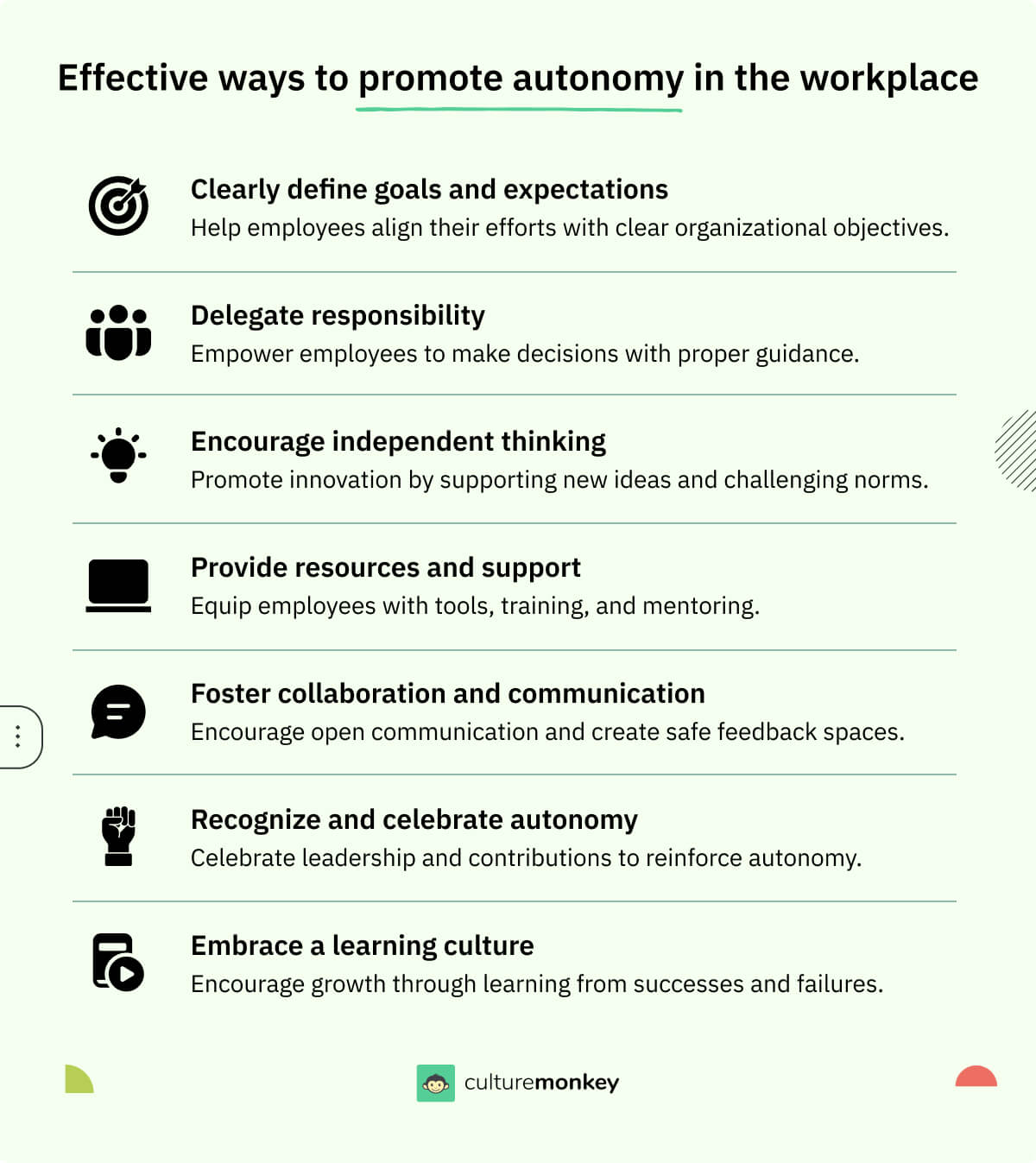
Enabling employee autonomy in the workplace requires intentional efforts and a supportive environment. Here are some key strategies to encourage autonomy in your organization:
- Clearly define goals and expectations: Set clear goals and expectations for each employee, providing them with a clear understanding of what needs to be achieved. Clarify the purpose and impact of their work, allowing them to see the bigger picture and align their efforts accordingly.
- Delegate responsibility: Delegate tasks and responsibilities to employees, allowing them to take ownership and make decisions within their areas of expertise. Provide them with the authority and autonomy to execute their work while being available for guidance and support when needed.
- Encourage independent thinking: Foster a culture that values independent thinking and encourages employees to explore new ideas and perspectives. Encourage them to question the status quo, challenge assumptions, and contribute their unique insights.
- Provide resources and support: Ensure that employees have the necessary resources, tools, and training to excel in their roles. Support their professional growth and development through mentoring, in-person or personalized online coaching, and relevant learning opportunities. This empowers them to take on new challenges with confidence.
- Foster collaboration and communication: Promote collaboration and open communication channels within the organization. Encourage employees to share their thoughts, ideas, and concerns openly. Create a safe space where individuals can discuss their work, provide feedback, and collaborate with their peers.
- Recognize and celebrate autonomy: Acknowledge and appreciate employees who demonstrate autonomy in their work. Recognize their accomplishments and efforts, both privately and publicly. Celebrate their leadership qualities, independent thinking, and decision-making abilities, reinforcing the importance and value of autonomy in the workplace.
- Embrace a learning culture: Cultivate a learning culture that encourages continuous improvement and experimentation. Encourage employees to learn from both successes and failures, allowing them to take calculated risks and grow from their experiences.
Still, many leaders hesitate because of misconceptions that hold them back.
What myths about workplace autonomy should leaders know?
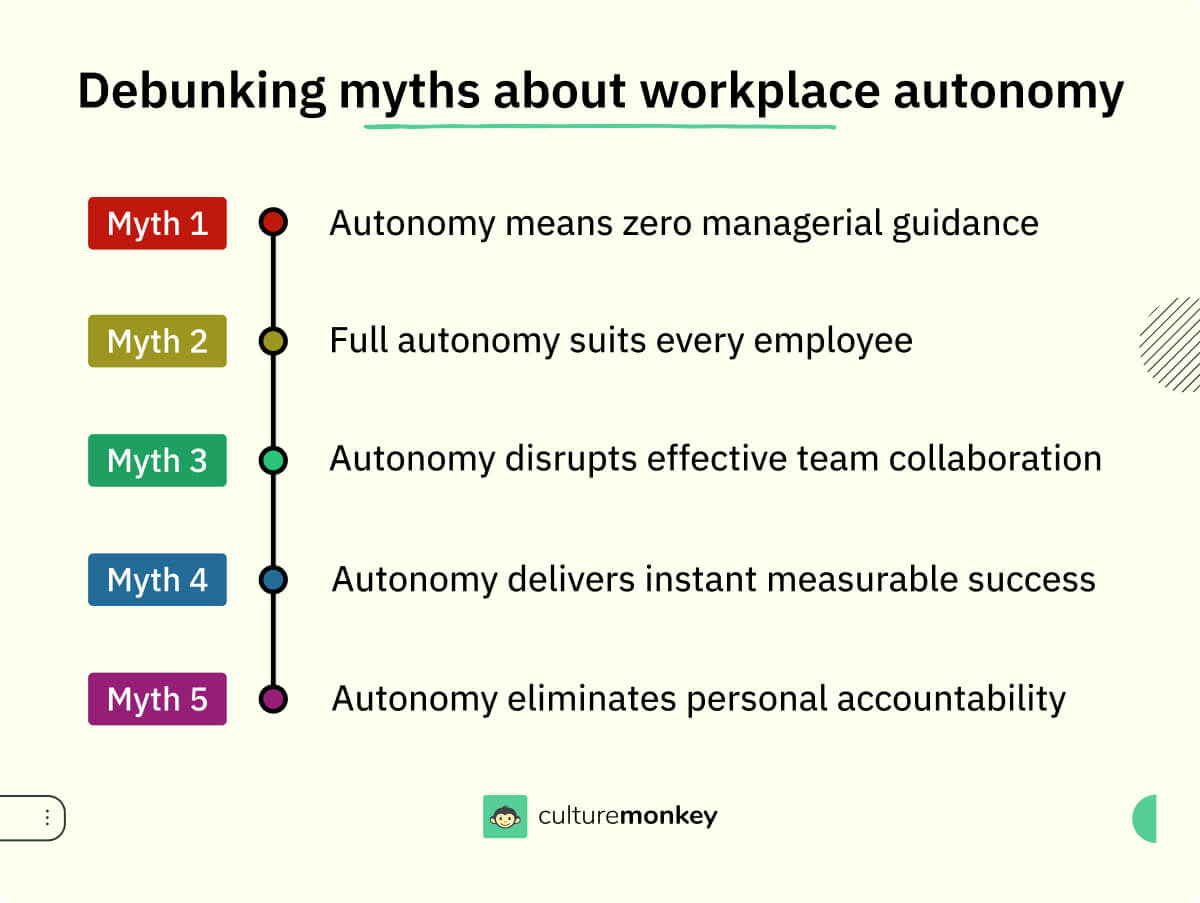
Workplace autonomy is often misunderstood, like a misunderstood orchestra—where freedom to play doesn’t mean chaos, but harmony under a shared vision. While autonomy is a powerful tool for engagement, misconceptions can lead to ineffective implementation. Leaders must debunk these myths to create a balanced and productive autonomous environment.
- Autonomy means no oversight: Autonomy doesn’t equate to an absence of management. Leaders still need to provide guidance, clear objectives, and support to ensure employees align their independence with organizational goals.
- Everyone wants full autonomy: Not all employees thrive under high autonomy. Some prefer structured environments with clear instructions and expectations, making it essential to tailor autonomy levels to individual needs and roles.
- Autonomy hinders teamwork: A common myth is that autonomy isolates employees. In reality, autonomy can enhance collaboration by empowering individuals to bring unique ideas to the table, enriching team discussions and outcomes.
- Autonomy guarantees instant results: Building an autonomous work culture takes time and effort. Employees need training, trust, and a supportive environment to fully leverage their independence for meaningful contributions.
- Autonomy replaces accountability: Autonomy doesn’t absolve employees of accountability. Instead, it strengthens responsibility by making individuals answerable for their decisions and outcomes, which drives better performance.
Now that we’ve separated fact from fiction, let’s look at how autonomy reshapes employee engagement and why it’s key to long-term employee retention.
How does autonomy in the workplace impact employee engagement?

Encouraging autonomy in the workplace has a significant impact on employee engagement. Here are some ways employee autonomy affects engagement in an organization:
TL;DR
Autonomy in the workplace enhances engagement by fostering trust, ownership, and purpose. Empowered employees feel valued, make meaningful decisions, and contribute proactively. This increased motivation boosts creativity, collaboration, and retention, creating a committed workforce aligned with organizational goals and long-term success.
- Increased motivation: Autonomy fosters intrinsic motivation as employees feel a sense of empowerment and control over their work.
- Improved job satisfaction: When individuals can exercise their judgment, be creative, and contribute their unique perspectives, they feel a deeper connection to their work and derive more satisfaction from their accomplishments.
- Enhanced sense of ownership: Employees who feel trusted and empowered to make decisions develop a stronger sense of responsibility and commitment to achieving their goals. This ownership mindset fuels engagement and a desire to excel.
- Greater sense of purpose: Autonomy connects employees' work to a larger purpose. When they align their tasks with their personal values and aspirations, they experience a deeper sense of meaning and fulfillment. This alignment enhances their engagement and dedication to their work.
- Increased creativity and innovation: Autonomy fosters a culture of creativity and innovation. Employees who freely explore new ideas, experiment, and take calculated risks, are more likely to generate innovative solutions and contribute fresh perspectives.
- Strengthened trust and collaboration: When individuals are given the autonomy to make decisions, it signals trust and confidence in their abilities. This trust enhances collaboration, as employees feel valued and empowered to contribute their expertise and perspectives.
But sustaining that engagement over time requires more than intent. It needs continuous listening.
“Won’t too much autonomy lead to chaos and lack of control?”
It’s a question many leaders who want to shift to autonomous leadership wrestle with and understandably so. Too much freedom can feel like a recipe for inconsistency, misalignment, or a loss of oversight. But that fear often stems from how autonomy is implemented, not from autonomy itself.
According to Gallup, 43% of employees say they don’t feel trusted by their managers when working remotely. This isn’t an argument against autonomy, it’s proof that autonomy without clarity, communication, and accountability is incomplete.
The most effective approach is to combine role autonomy and task autonomy, to understand the level of autonomy in the workplace with well-defined guardrails, feedback loops, and shared accountability. This balance ensures autonomy in the workplace doesn’t spiral into chaos but instead fuels innovation, ownership, and long-term performance.
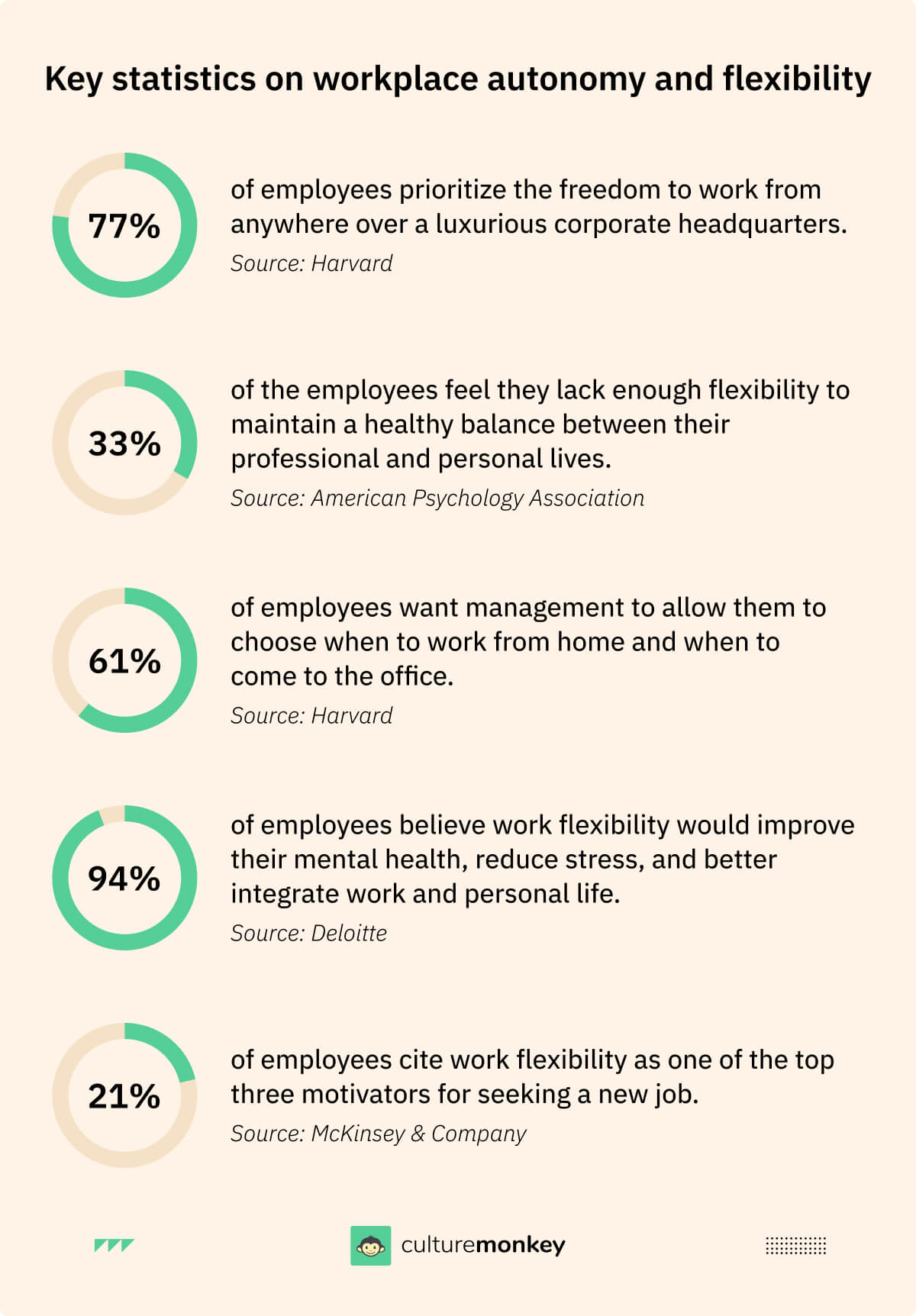
How to improve and sustain autonomy in the workplace with the help of employee survey tools?

To improve and sustain autonomy in the workplace, follow these steps:
- Clarify direction and purpose: Set clear goals and expectations to give employees a solid understanding of their responsibilities and objectives.
- Foster transparency and dialogue: Build open communication channels to encourage regular feedback and idea-sharing, creating a collaborative atmosphere that supports autonomy.
- Empower decisions at every level: Provide decision-making opportunities, empowering employees to make choices related to their projects, which fosters independence and accountability.
- Equip teams with the right support: Ensure employees have access to the necessary resources and training, equipping them with the tools and skills for building autonomy in workplace.
- Align independence with accountability: Balance freedom with accountability to keep projects on track and maintain focus on the team’s objectives.
- Reinforce learning through recognition: Celebrate both successes and setbacks as growth opportunities, recognizing efforts regardless of outcomes, to create a culture that values learning and thoughtful risk-taking.
And when it comes to choosing the right tool, one platform stands out.
Build autonomy in workplace with CultureMonkey
Creating autonomy in the workplace requires more than just policies—it demands tools that empower, engage, and provide actionable insights. CultureMonkey offers the perfect solution to foster an autonomous work environment tailored to your organization’s needs.
Heatmap visualisation
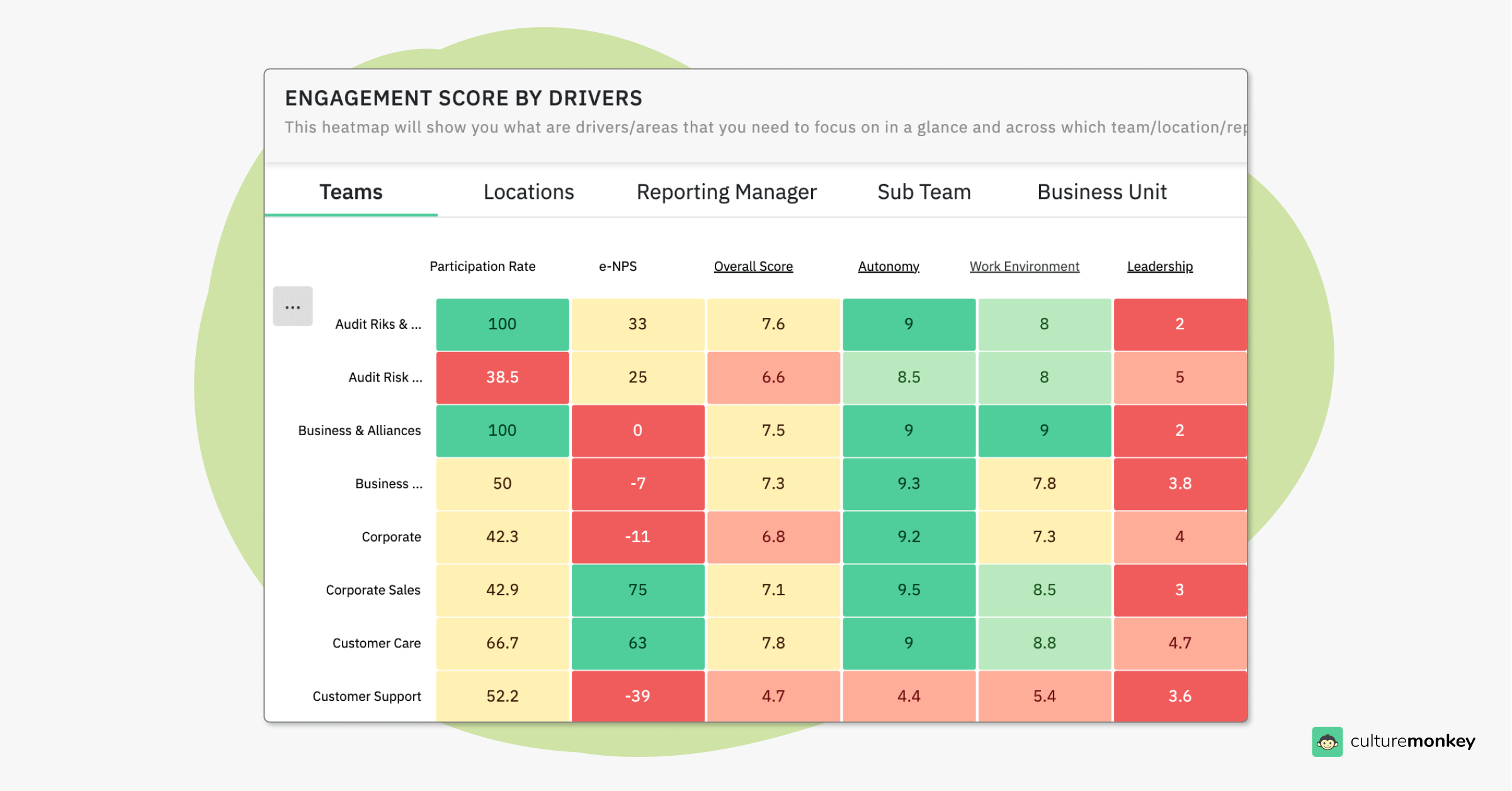
With CultureMonkey's heatmap visualization, managers gain clear insights into how autonomy is distributed across different teams or departments. This feature makes it easy to identify areas where employees feel empowered versus where they need more independence, enabling targeted actions that foster greater workplace autonomy.
Customisable autonomy survey templates
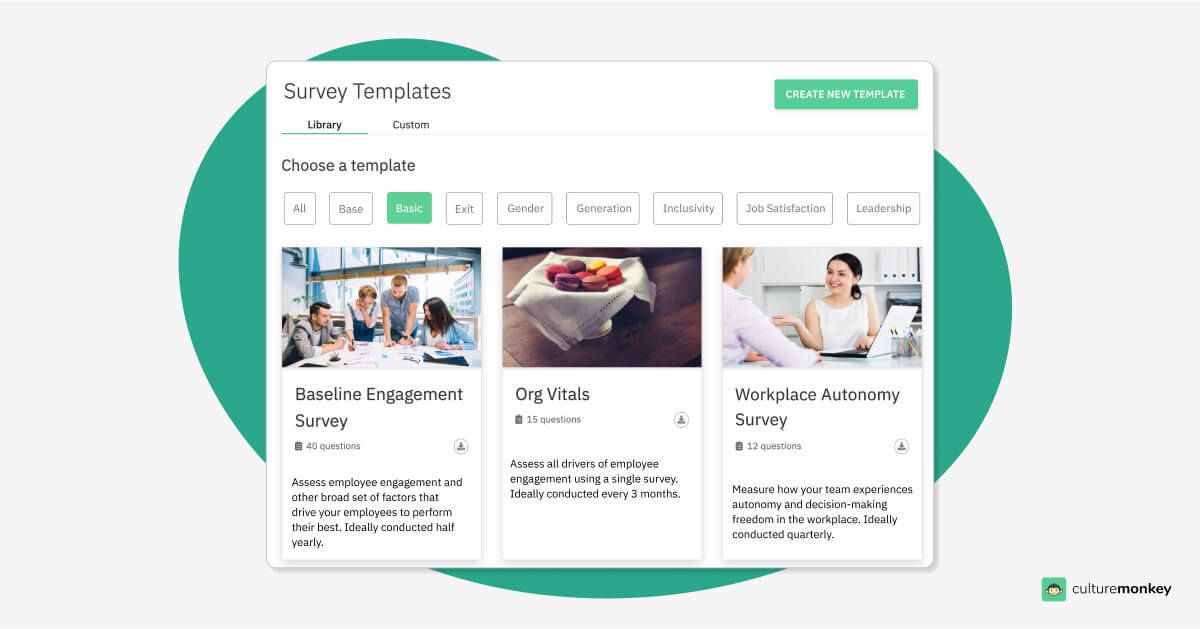
CultureMonkey offers customizable autonomy survey templates allow organizations to tailor questions specifically around workplace autonomy. This flexibility ensures that surveys reflect the unique needs and culture of your company, leading to actionable insights that truly resonate with employees and support their autonomy journey.
Built-in Likert scale
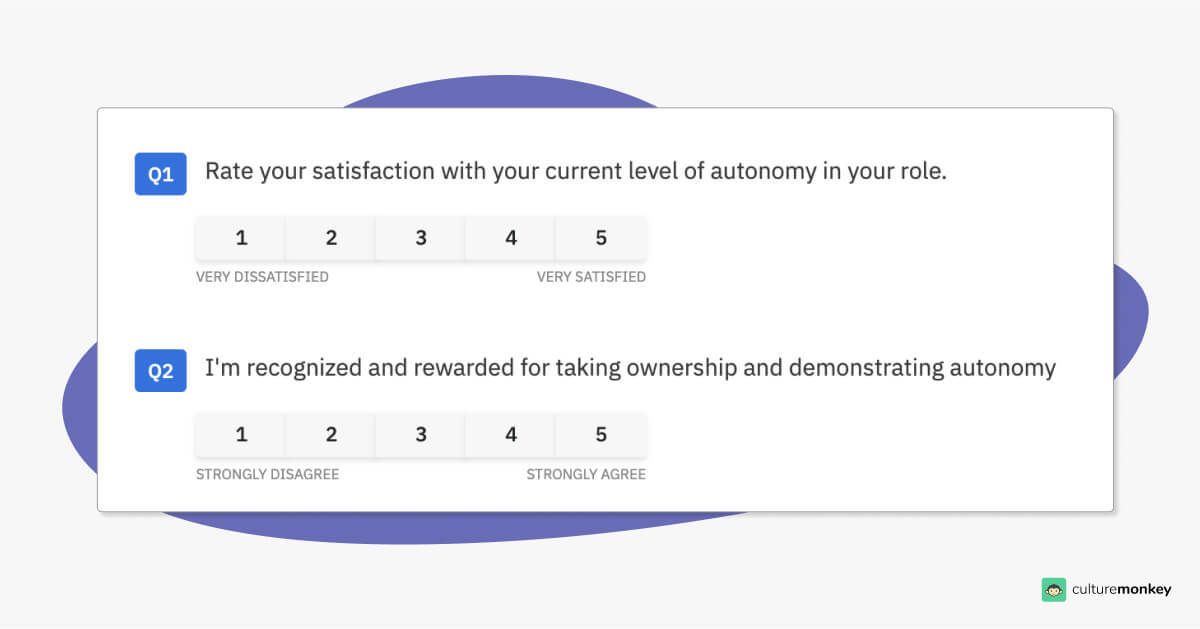
The built-in Likert scale provides employees with an easy and intuitive way to express their feelings about autonomy levels. By quantifying these perceptions, CultureMonkey helps you measure workplace autonomy effectively, making it possible to track progress and improve areas that matter most.
Sentiment analysis tools
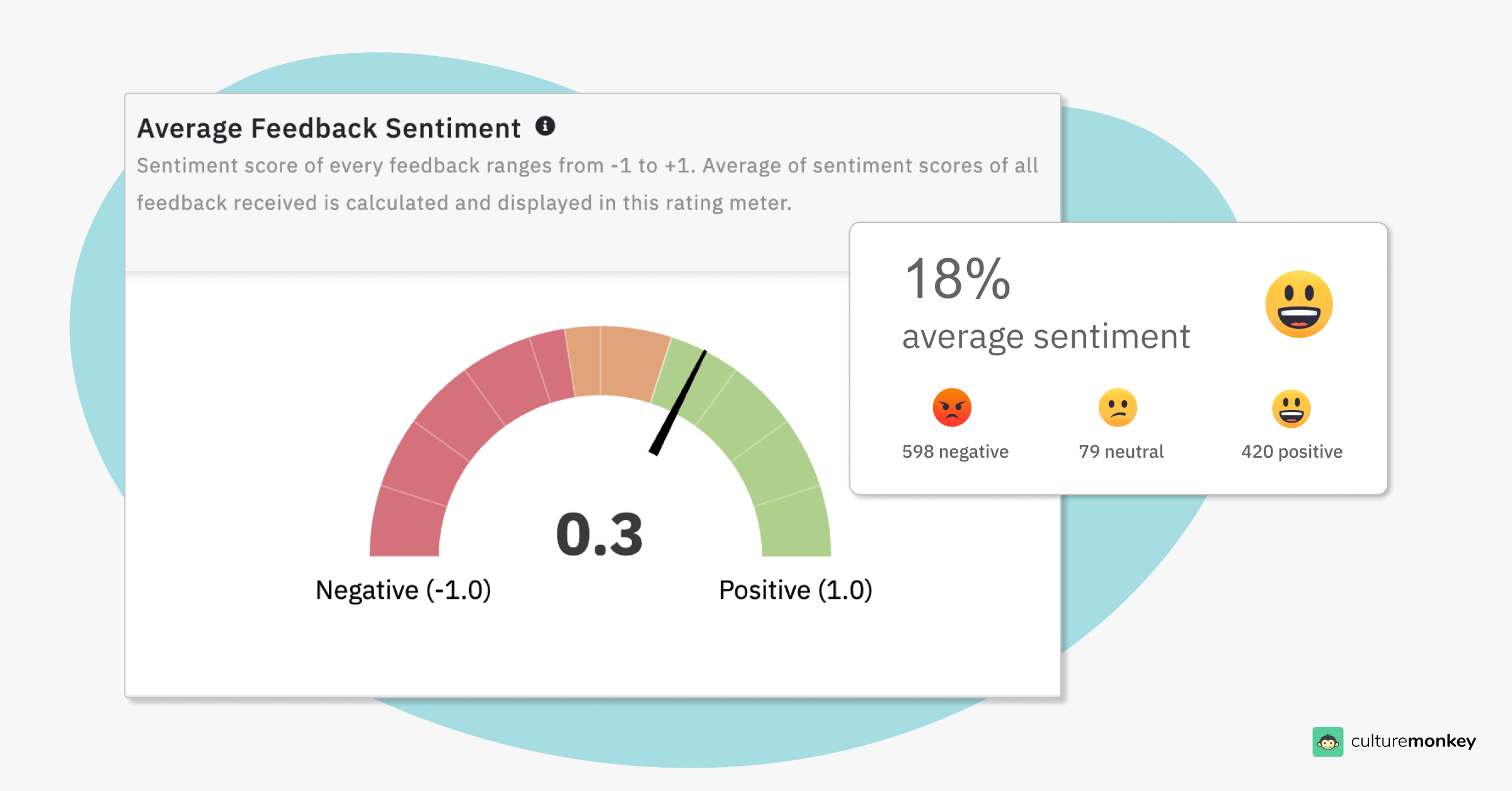
CultureMonkey’s sentiment analysis tools capture how employees feel about the freedom and flexibility in their roles. By analyzing feedback, HR leaders can gauge levels of autonomy within teams, identifying areas where employees feel empowered and where adjustments are needed to provide greater independence, ultimately fostering a supportive and flexible work culture.
Action recommendations
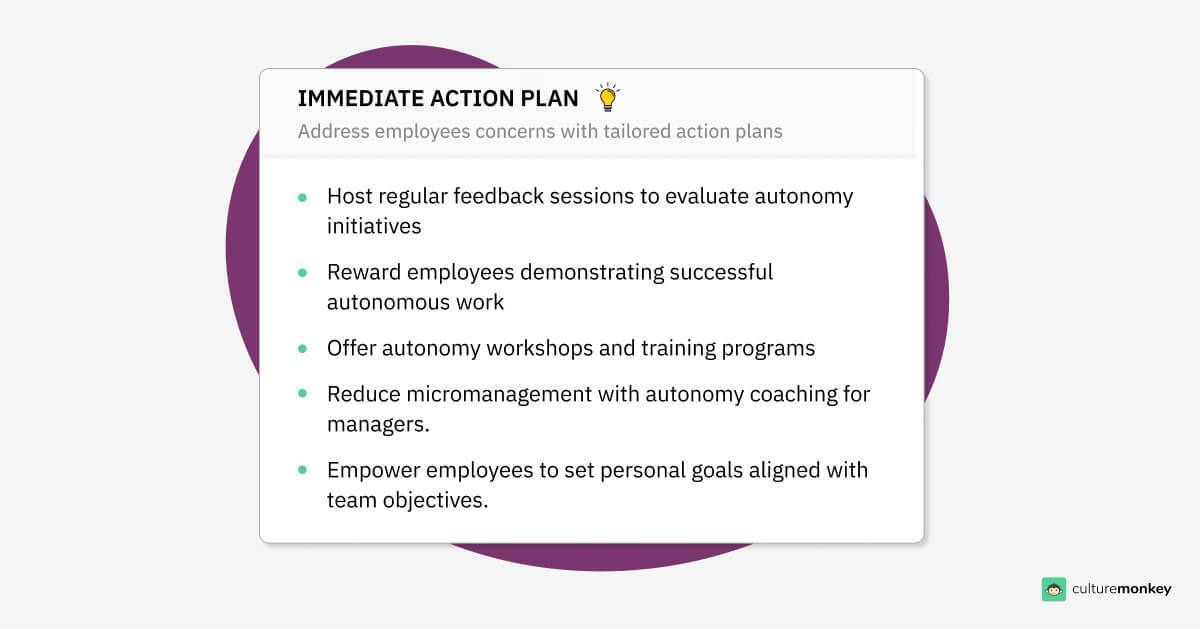
Personalized recommendations that guide managers and leaders on practical next steps to enhance autonomy. These targeted actions empower teams, build trust, and create a culture where employees enjoy the independence they need to thrive. With CultureMonkey, autonomy evolves from an idea into measurable success.
Conclusion
Workplace autonomy is essential for fostering innovation, enhancing employee satisfaction, and driving organizational success. It empowers individuals to take ownership of their roles, unleashing creativity and accountability. By building a culture of trust and providing employees with the freedom to make decisions, organizations can achieve greater engagement and productivity.
Embracing autonomy isn’t just a strategy—it’s a cornerstone for sustainable growth and a thriving workplace. As important autonomy sounds for an organization, it is essential to measure and improve it. This is where an employee engagement survey software like CultureMonkey saves the day.
CultureMonkey helps you to seamlessly send employee autonomy surveys to your team members across geographies, to accurately measure, analyze and improve your workplace autonomy, without breaking a sweat. Book a demo with us today!
FAQs
1. How does autonomy in the workplace impact retention of employees?
When employees have a sense of autonomy and control over their work, they feel more engaged, satisfied, and fulfilled. This increased job satisfaction and motivation can contribute to higher employee retention rates, enhanced productivity, and a positive workplace culture where individuals are empowered to take initiative and innovate. Autonomy fosters commitment, making employees more likely to grow and develop within the organization.
2. Is autonomy in the workplace a good thing?
Yes, autonomy is highly beneficial in the workplace. It empowers employees to take ownership of their roles, which increases engagement and motivation. With autonomy, employees are more likely to bring creativity and innovation to their tasks, as they feel trusted and valued. This sense of responsibility often leads to higher productivity, job satisfaction, and commitment, creating a more effective and dynamic workplace overall.
3. How does autonomy in job design affect employees?
Autonomy in job design allows employees to shape their roles based on their skills and interests, increasing motivation and job satisfaction. This freedom can reduce burnout by enabling individuals to work in ways that align with their strengths. When employees have the flexibility to manage their responsibilities, they feel more valued, leading to better performance and a greater sense of purpose in their work.
4. How much freedom do you give employees, and how do you provide this freedom while maintaining authority?
Providing balanced freedom involves allowing employees to make task-related decisions while setting clear goals and expectations. This balance is achieved by conducting regular check-ins and offering guidance when needed. By focusing on outcomes rather than micromanaging processes, managers can maintain authority and alignment with company objectives while encouraging employees to work independently, fostering both accountability and trust.
5. What does autonomy in the workplace look like?
Autonomy in the workplace allows employees to control how they complete their tasks. It means they’re empowered to make decisions about their workflows, schedules, and problem-solving approaches, contributing unique perspectives to their roles. They take responsibility for achieving outcomes, while managers act as supportive guides. Autonomy encourages collaboration and creativity, as employees are trusted to drive their own success within team goals.
6. Can too much autonomy be a bad thing?
Yes, too much autonomy can be counterproductive if it's not balanced with clear expectations and support. Without guidance, employees may feel uncertain, misaligned, or overwhelmed, leading to inconsistent performance. Autonomy works best when paired with trust, communication, and accountability—ensuring employees have the freedom to act while staying aligned with team and organizational goals.
7. What’s the difference between autonomy and flexibility at work?
Autonomy and flexibility at work are related but distinct. Autonomy refers to the freedom employees have in making decisions about how they complete their tasks, fostering ownership and independence. Flexibility, on the other hand, relates to when and where work happens—such as remote work or adjustable hours. Both support engagement, but autonomy emphasizes control over how, while flexibility focuses on when and where.
8. How does autonomy affect team dynamics and collaboration?
Autonomy in the workplace builds trust, fuels collaboration, and encourages diverse perspectives daily. With strong task autonomy and role autonomy, teams communicate openly, make decisions faster, and align around shared goals. This autonomous workplace culture strengthens relationships, enhances problem-solving, and ensures innovation thrives without micromanagement and helps in creating a resilient, high-performing team environment consistently.
9. How can managers encourage autonomy without losing control?
Managers can promote autonomy in management by setting clear expectations, defining boundaries, and maintaining accountability structures. Offering decision-making freedom and staff autonomy while tracking shared metrics ensures alignment with organizational goals. Continuous feedback, transparent communication, and supportive leadership enable complete autonomy to scale effectively without chaos while blending independence with structure for sustainable, measurable results organization-wide.
10. Why is autonomy important for employee engagement?
Employee autonomy drives engagement by empowering individuals to shape their work, make impactful choices, and feel trusted consistently. Autonomy to make decisions fosters ownership, while freedom at work builds purpose and motivation. This autonomy-driven environment enhances connection, reduces burnout, and transforms participation into commitment by boosting performance, satisfaction, and retention across the entire organization sustainably.


.webp)


